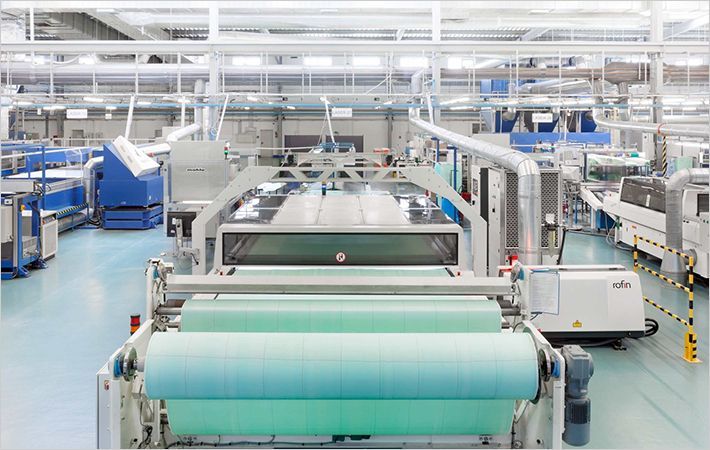Also, the ability to selectively recycle a structural component would have significant impact in the semiconductor industry, advanced manufacturing or advanced composites for transportation, as one would be able to rework high-value but defective manufactured parts or chips instead of throwing them away. This could bolster fabrication yields, save money and significantly decrease microelectronic waste. "Although there has been significant work in high-performance materials, today's engineered polymers still lack several fundamental attributes. New materials innovation is critical to addressing major global challenges, developing new products and emerging disruptive technologies," said James Hedrick, Advanced Organic Materials Scientist, IBM Research.
Scientists from IBM Research have successfully discovered a new class of polymer materials that can potentially transform manufacturing and #
"We're now able to predict how molecules will respond to chemical reactions and build new polymer structures with significant guidance from computation that facilitates accelerated materials discovery. This is unique to IBM and allows us to address the complex needs of advanced materials for applications in transportation, microelectronic or advanced manufacturing."
Scientists from IBM Research have successfully discovered a new class of polymer materials that can potentially transform manufacturing and #
Materials Science Innovation
The field of material science is often thought of as a mature field, with the most recent new class of polymer materials being discovered and introduced to the commercial market decades ago. Also, most current polymer research involves studying polymers that are "old" polymers and combining known polymers together or simply adjusting chemical functional groups on known polymers to access desired properties, as opposed to making completely new polymers.
Scientists from IBM Research have successfully discovered a new class of polymer materials that can potentially transform manufacturing and #
IBM scientists used a novel 'computational chemistry' hybrid approach to accelerate the materials discovery process that couples lab experimentation with the use of high-performance computing to model new polymer forming reactions. The unconventional method is a departure from traditional techniques and led to the identification of several previously undiscovered classes of polymers in what was believed to be an established area of materials science researched extensively since the 1950s.
Scientists from IBM Research have successfully discovered a new class of polymer materials that can potentially transform manufacturing and #
Ideally, scientists could insert a list of requirements into a computer to design a material that meets those exact conditions. Unfortunately, the reality now is that materials are still primarily discovered only by experimenting in the lab based on the scientist's knowledge, experience and educated guesses. IBM Research's computational chemistry efforts can take out a lot of this guesswork and accelerate a whole new range of potential applications from developing a disease-specific drugs or cheap, light, tough and completely recyclable panels on a car.
Scientists from IBM Research have successfully discovered a new class of polymer materials that can potentially transform manufacturing and #
"By joining forces with IBM Research and bringing together the minds of KACST and IBM scientists, we have managed to merge the strengths of both sides, making it possible to bring forth novel green materials that exhibit excellent properties while being completely recyclable. We believe that this work can have significant impact to multiple industries and hope to see more great things come from our collaboration," said his highness prince Turki bin Saud, KACST VP of Research Institutes.
Scientists from IBM Research have successfully discovered a new class of polymer materials that can potentially transform manufacturing and #
IBM

